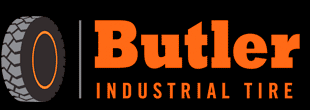
Category Archives: Forklift Tires
What is the best time to replace my tires?
This is one of the most frequent questions we hear when we are talking to our customers, whether on the phone or at their location. It is also the one question that doesn’t have a definitive answer because it really does depend on the customer’s use and expectations for their industrial tire needs.
General guidelines for replacement for the steel band press on, or POB for short, is generally when the tire wears down to right above where the numbers are for the given tire’s size. This will usually indicate a percentage of tire that has been used and will fall at the minimum weight carrying capacity of that size tire. For instance, a 21x7x15 POB tire should not be used any further after its overall diameter gets to around 18.5”. Since POB type tires have different widths and the same overall diameter, the minimum diameter for each will still be the same.
We have a handy ruler type gauge that we use for this. Please let your representative know if you’d like one.
There are of course exceptions to this. If, for instance, the customer’s safety requirements dictate a minimum amount of tread depth, or tire diameter, then even though the tire can still be used, it would need to be replaced.
Another exception may be for traction requirements. Most of the typical drive tire sizes can be purchased with either a smooth or traction style tread. If the customer uses the traction tread pattern, then after the tread blocks have been worn smooth, the tire would need to be replaced.
Guidelines for pneumatic tires that are not urethane filled are more specific. Generally when the tread pattern is mostly smooth or just a minimum of the original tread pattern can be seen, it is the best time to replace them. These tires shouldn’t ever reach the point where the cords of the belts start to show. Tires that get there are severely compromised and should be replaced as soon as it is practical. Steel belted radial tires retain more integrity when the cords are showing but are still in need of immediate replacement.
Lastly there are the resilient, or solid pneumatic style of industrial tires. These are the ones we see with the greatest variables related to replacement. Industry guidelines for replacement are when the overall diameter has worn down to the 60J line on the tire. This line is usually indicated by a molded in line that runs around the tire right below the beginning of the tread pattern. For multi-layer tires such as the Continental SC 18, this is where the outer tread layer and the inner heat dissipation layer meet. Once past this point, the tire will deteriorate rapidly. This is a lesser concern to both a single or two layer type of resilient; however, they should still be replaced.
As with the POB tires, there are exceptions to when tires need replacing. Starting in the fall here in Minnesota, many customers will be operating outside in the snow, so even though there may be tread left, it may not be sufficient to provide the required level of traction through the winter.
If you are not sure whether the tires on your forklifts or other types of equipment need replacing, please give us a call, and we will be happy to help.
